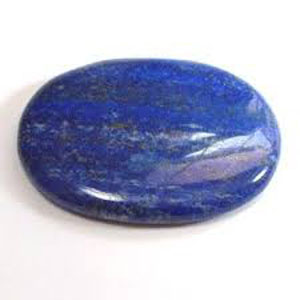Lapis Lazuli ( Lajward )
Starting at Rs. ₹30.00 Per Rati
One of the most sought after gemstones ever known to man, Lapis Lazuli is the epitome of honor & royalty.
The benefits if Lapis Lazuli to the wearer are as follows:
• Known as the stone of truth, Lapis encourages honesty
• Attracts promotion and prosperity
• Helps heling cardiac issues
• Helps women with menstrual irregularities
• Helps promote creativity
Description
Lapis Lazuli Stone or lapis is one of the most sought after stones in use since man’s history began. Its deep, celestial blue remains the symbol of royalty and honor, gods and power, spirit and vision. It is a universal symbol of wisdom and truth. Lapis for short, is a deep blue metamorphic rock used as a semi-precious stone that has been prized since antiquityfor its intense color. As early as the 7th millennium BC, lapis lazuli was mined in the Sar-i Sang mines, in Shortugai, and in other mines in Badakhshanprovince in northeast Afghanistan. Lapis was highly valued by the Indus Valley Civilisation (3300–1900 BC). Lapis beads have been found at Neolithic burials in Mehrgarh, the Caucasus, and even as far from Afghanistan as Mauritania. It was used in the funeral mask of Tutankhamun
In ancient times Lapis Lazuli Stone was most highly regarded because of its beautiful color and the valuable ultramarine dye derived from it. Its name comes from the Latin lapis, “stone,” and the Persian lazhuward, “blue.” It is rock formed by multiple minerals, mostly Lazurite, Sodalite, Calcite and Pyrite, and is a rich medium to royal blue with gold flecks (pyrites). Lower-grade Lapis is lighter blue with more white than gold flecks, and is sometimes called denim Lapis.
Lapis Lazuli Stone was among the most highly prized tribute paid to Egypt, obtained from the oldest mines in the world, worked from around 4000 B.C. and still in use today. Referenced in the Old Testament as sapphire (unknown in that part of the ancient world), Lapis Lazuli is most likely the fifth stone in the original breastplate of the High Priest, as well as those of later times.
The golden sarcophagus of King Tutankhamen was richly inlaid with Lapis, as were other burial ornaments of Egyptian kings and queens. It was used extensively in scarabs, pendants and other jewelry, and ground into powder for dyes, eye shadow and medicinal elixirs. In the dry, barren land of the Egyptians, this deep cobalt blue color was a spiritual contrast to their arid desert hues. The gold flecks were like stars in their night-time sky and by meditating on these colors they felt supernatural forces would transform their lives. The garments of priests and royalty were dyed with Lapis to indicate their status as gods themselves.
In ancient Persia and pre-Columbian America, Lapis Lazuli Stone was a symbol of the starry night, and a favorite stone of the Islamic Orient for protection from the evil eye. Lapis was much used in Greek and Roman times as an ornamental stone, and in medieval Europe, Lapis Lazuli, resembling the blue of the heavens, was believed to counteract the wiles of the spirits of darkness and procure the aid and favor of the spirits of light and wisdom. Ground and processed into powder, it produced the intense, but expensive, ultramarine color favored by the painter, Michelangelo. Buddhists recommended Lapis as a stone to bring inner peace and freedom from negative thought, and during the Renaissance, Catherine the Great adorned an entire room in her palace with Lapis Lazuli walls, fireplaces, doors and mirror frames.
Lapis is an excellent stone for executives, journalists, and psychologists, stimulating wisdom and good judgment in the practical world. It aids intellectual analysis in archeologists and historians, problem solving for lawyers, and creates new ideas for inventors and writers.
Lapis Lazuli is a powerful crystal for activating the higher mind and enhancing intellectual ability. It stimulates the desire for knowledge, truth and understanding, and aids the process of learning. It is excellent for enhancing memory.
A stone of truth, Lapis encourages honesty of the spirit, and in the spoken and written word. Wear it for all forms of deep communication. It is also a stone of friendship and brings harmony in relationships. A Lapis grid brings calm and loving communication for a home with temperamental teenagers, or children with Asperger’s syndrome, autism, or attention-deficit disorder.
For fame in a creative or public performance-related area, wear or carry Lapis Lazuli to auditions. In the workplace, it attracts promotion, success and lasting recognition in your field.
Lapis Lazuli is beneficial to the throat, larynx, and vocal chords, and helps regulate the endocrine and thyroid glands. It overcomes hearing loss and other problems with ear and nasal passages.
Lapis Lazuli Stone enhances circulation and improves cardiac rhythm. It reduces vertigo and lowers blood pressure, and is thought to alleviate insomnia.
Relieve oozing or septic sties, and other eye infections, by rubbing the area with a piece of Lapis heated in warm water. Once cooled, the water can then be used for an eye bath. A Lapis heated in sunlight, reduces bruising and is good for skin problems and insect bites.
Lapis is beneficial for women suffering from menstrual irregularities, and relieves cramps, stiffness and lumbago. Lapis Lazuli relieves general pain and inflammations, and is especially effective against migraine headaches. It aids the nervous system and brain disorders, and is believed to help with attention-deficit, autism and Asperger’s syndrome.


Reviews
There are no reviews yet.